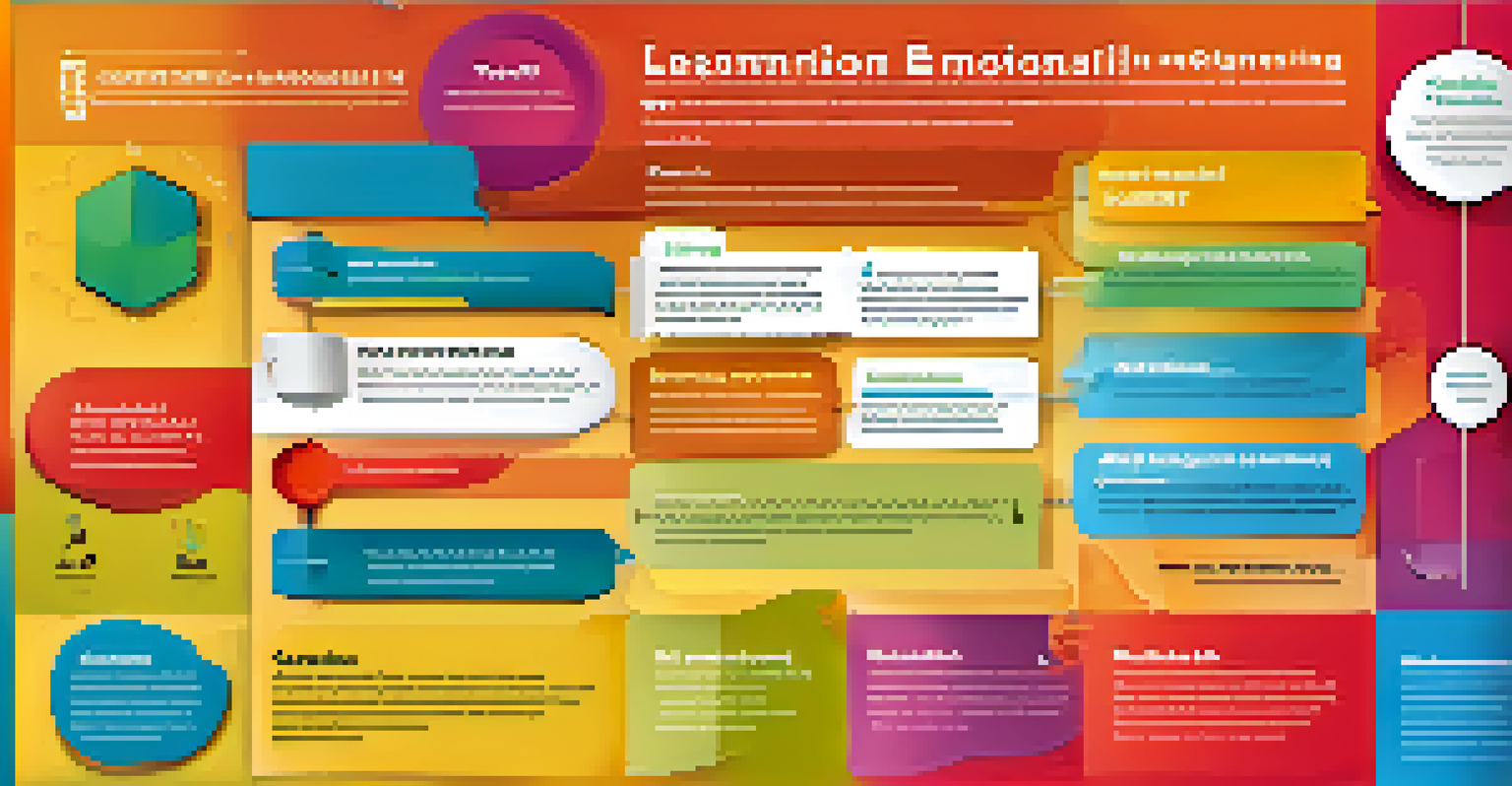The Role of User Experience in Learning Experience Design

Defining User Experience (UX) in Learning Design
User experience (UX) refers to how a person feels when interacting with a product or service. In learning experience design, this translates to the overall experience learners have while engaging with educational materials. A positive UX fosters better retention and engagement, making it crucial for effective learning.
The design is not just what it looks like and feels like. The design is how it works.
For instance, consider a mobile app that offers language learning. If the interface is intuitive and enjoyable, users are more likely to stick with it. Conversely, a confusing or frustrating app can lead to disengagement, highlighting how essential UX is in this context.
In short, understanding UX helps designers create educational experiences that resonate with learners, ensuring that the content is not only informative but also engaging.
The Impact of UX on Learning Outcomes
The way learners interact with materials significantly influences their outcomes. Research shows that a well-designed learning experience can lead to improved knowledge retention and application. When learners feel comfortable navigating the content, they are more likely to absorb and utilize that information effectively.

Think of it this way: Imagine studying for an exam using a textbook with clear visuals and interactive elements versus one that’s densely packed with text. The former enhances understanding and recall, while the latter can turn studying into a chore, making it harder to achieve desired outcomes.
Thus, UX plays a pivotal role in shaping how effectively learners grasp and apply new concepts, reinforcing the need for thoughtful design in educational contexts.
User-Centered Design Principles in Learning
User-centered design (UCD) is an approach that places the needs and preferences of users at the forefront of the design process. This is particularly important in learning experience design, as it ensures that the educational materials cater to diverse learning styles and preferences. By focusing on the user, designers can create more effective and engaging experiences.
Accessibility allows us to tap into everyone’s potential.
For example, when designing an online course, considering feedback from potential learners can reveal their preferences for video, text, or interactive content. This input allows designers to tailor the course to meet user expectations, enhancing overall satisfaction and engagement.
Incorporating UCD principles not only improves the learning experience but also empowers learners, making them feel valued in the design process.
The Role of Feedback in Enhancing UX
Feedback is essential in the learning experience design process as it helps identify areas for improvement. By soliciting input from users, designers can understand what works and what doesn’t, allowing for adjustments that enhance the overall UX. This iterative process is key to creating content that truly meets learner needs.
Consider how online platforms often include quizzes or surveys to gather user opinions. This information can lead to modifications that make the learning experience more enjoyable and effective. As such, leveraging feedback becomes a vital tool for continuous improvement.
Incorporating feedback not only refines the design but also fosters a sense of community among learners, as they see their opinions valued and acted upon.
Accessibility: A Cornerstone of Effective UX
Accessibility ensures that all learners can engage with educational materials, regardless of their abilities. A strong UX incorporates accessibility features, allowing for a wider audience to benefit from learning experiences. This not only promotes inclusivity but also reflects the values of equality and respect.
For instance, adding features like captions for videos or screen reader compatibility can make a significant difference for learners with disabilities. These small adjustments can transform a learning experience from exclusionary to welcoming, providing equitable opportunities for all.
Thus, prioritizing accessibility in UX design is not just a good practice; it’s essential for creating learning environments where every individual has the chance to succeed.
Emotional Design: Engaging Learners on a Deeper Level
Emotional design focuses on creating a connection between the learner and the content through aesthetics and user interaction. By tapping into emotions, designers can enhance motivation and engagement, making learning a more enjoyable process. This approach recognizes that learning isn’t just about facts; it’s also about feelings.
For example, a course that uses vibrant visuals, engaging narratives, and relatable characters can evoke positive emotions, leading to a more immersive learning experience. When learners feel emotionally connected, they are more likely to invest time and effort into their education.
Incorporating emotional design elements can bridge the gap between information and engagement, transforming the way learners interact with content.
Future Trends in UX and Learning Experience Design
The landscape of learning experience design is rapidly evolving, with technology playing a significant role in shaping UX. Trends such as artificial intelligence, virtual reality, and gamification are revolutionizing how learners engage with content. As these technologies advance, they present new opportunities for creating immersive and interactive learning experiences.
For instance, imagine a virtual reality classroom where learners can explore historical sites or scientific phenomena. This type of experiential learning not only captivates learners but also deepens understanding through exploration and interaction.

Staying ahead of these trends is crucial for designers looking to create cutting-edge learning experiences that resonate with modern learners.